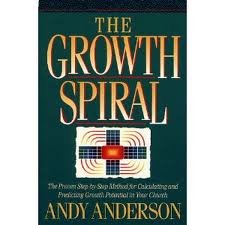
In Part 9, I will expand upon the growth goal of contacts. Andy referred to space, contacts, and outreachers as outreach/ministry goals. Over the last several blog posts, I have expanded on a post I wrote four years ago entitled Sunday School Growth Spiral. There I shared growth goals from Andy Anderson‘s book, The Growth Spiral.
Not only is making contacts an outreach/ministry goal, it could also easily be a quantity goal and a quality goal. Making more contacts enables more care for members, absentees, and prospects. At the same time, contacts with prospects shows the love of the class and of Christ and leads some to visit the class and to join. But making contacts is obviously an outreach/ministry goal when it is focused on prospects.
There are two important results of making contacts with members, absentees, and prospects:
- RESULT ONE: care, relationships, ministry, and assimilation for class members. Members connect and stick. Absentees don’t become dropouts. When a person misses, the class knows why and reaches out because they care.
- RESULT TWO: care, outreach, and invitation for prospects. When prospects are contacted, prayed with, cared for, and invited to class fellowships and Sunday morning Bible study, many will say yes. Caring contacts with prospects make a difference.
This begins with two class lists:
- LIST ONE: The class roll is the first list. It is a list of members with contact information. It keeps track of attendance in order to point out where care is needed. It mobilizes and enables prayer and contacts by caring class members.
- LIST TWO: The prospect list is the second list. It is a list of friends, relatives, associates, and neighbors who are not enrolled in Sunday School. They may be church members not enrolled, family members who are not enrolled, or others. The prospect list should include names, contact information, age/grade, and results of contact efforts. Why not allow each person who makes contact with the prospect to build upon the relationship that has begun?
Who should make the contacts? They should be made by every class member and not only the teacher. But when it is everyone’s job, then often no one does it. That means that it should be assigned to someone. That can be by enlisting two leaders: a ministry (inreach) leader and an outreach leader. The ministry (inreach leader) will focus on leading the class to care for members. He/she will assign contacts with members and absentees. The outreach leader will lead the class to focus on developing a prospect list and assign contacts with prospects to class members.
Another way to organize to get it done in adult and youth classes is through care group leaders. This is especially effective when care group leaders have both members and prospects assigned. The care groups should not be too large or weekly contacts will become burdensome. That means that no more than 3 member and 3 prospects per care group leader would be preferable. See A Simple Two-Part System for Getting Sunday School Class Ministry Done, Part 4 for more ideas about care group leader responsibilities.
Contact and care for members. Contact and care for absentees. Contact and care for prospects. Pray. Meet needs. Mobilize class members to care. Build relationships. Invite. Plan to grow! Be revolutionary!
While The Growth Spiral, is out of print, you can still find used copies for sale online. The book is worth adding to your Sunday School library for all the practical ideas that run throughout the book!
Leave a Reply